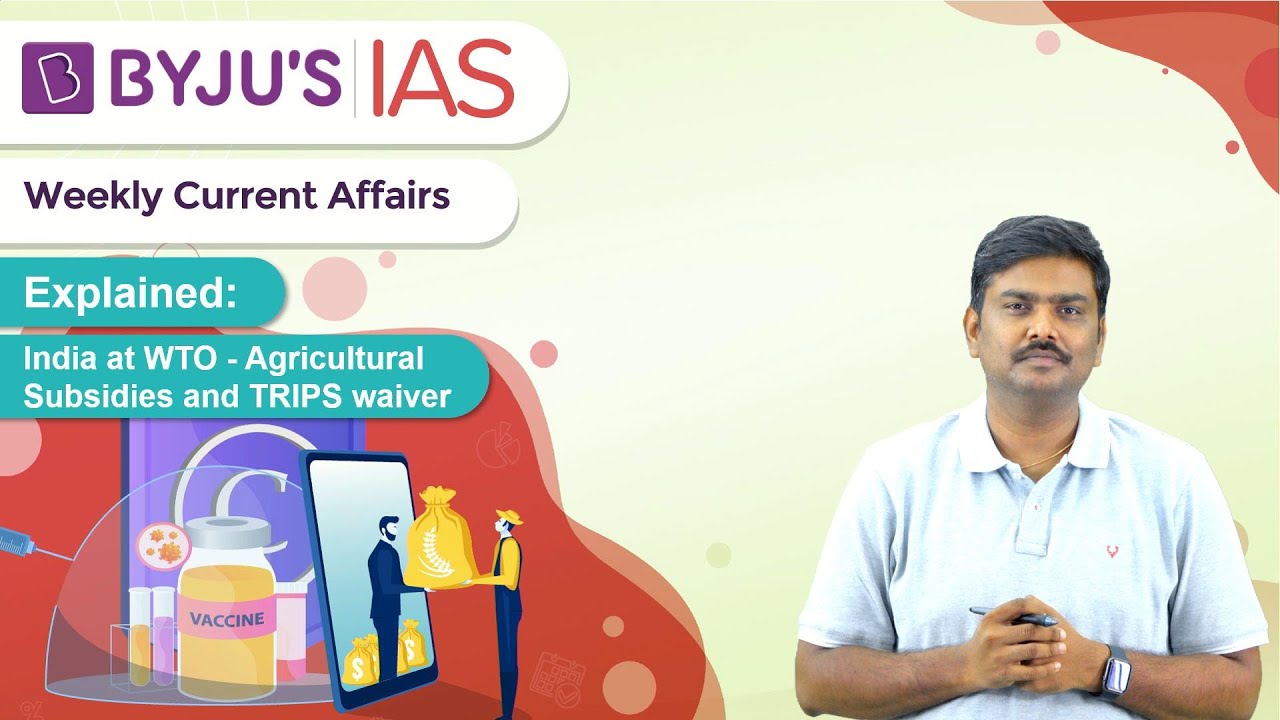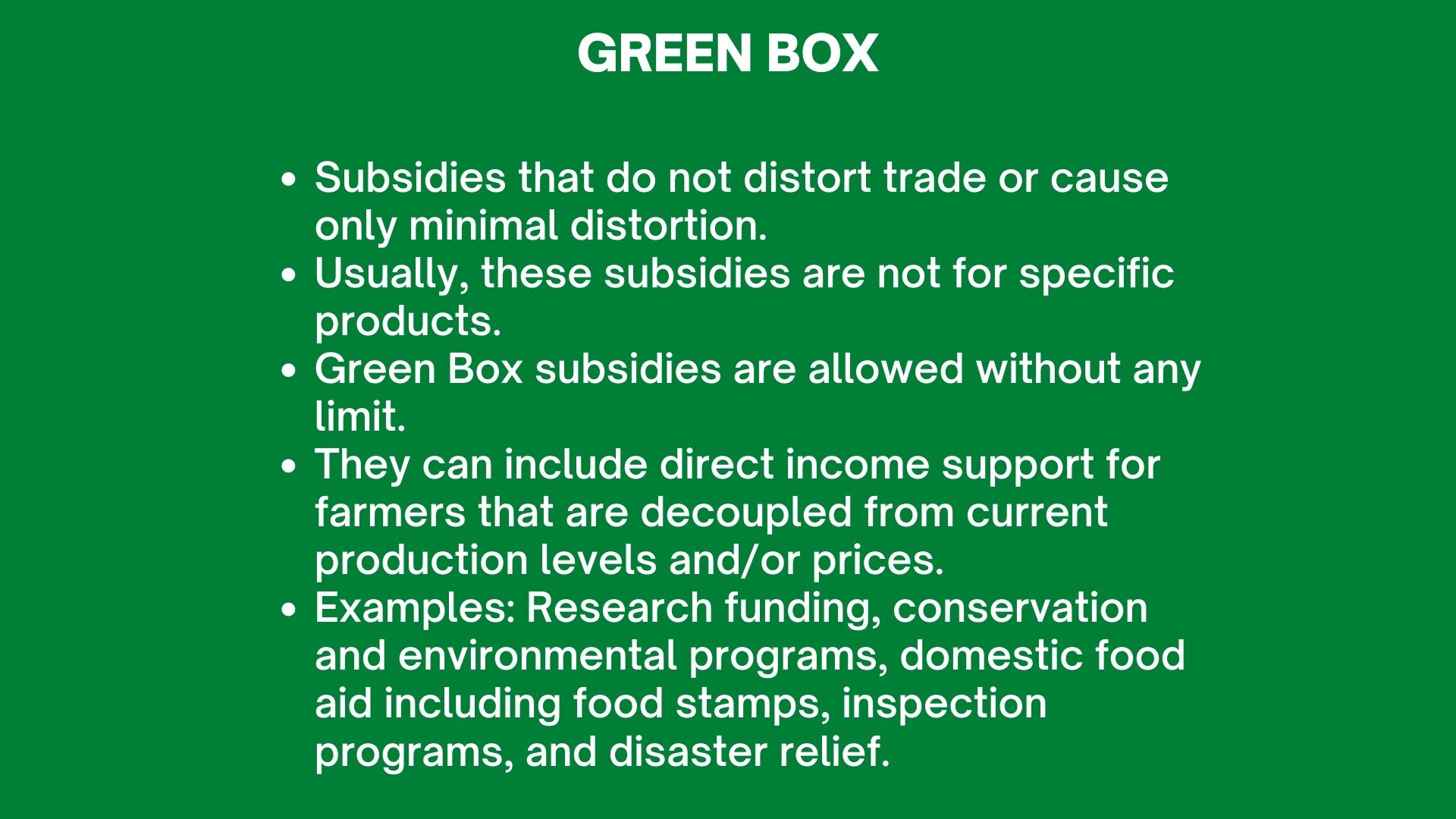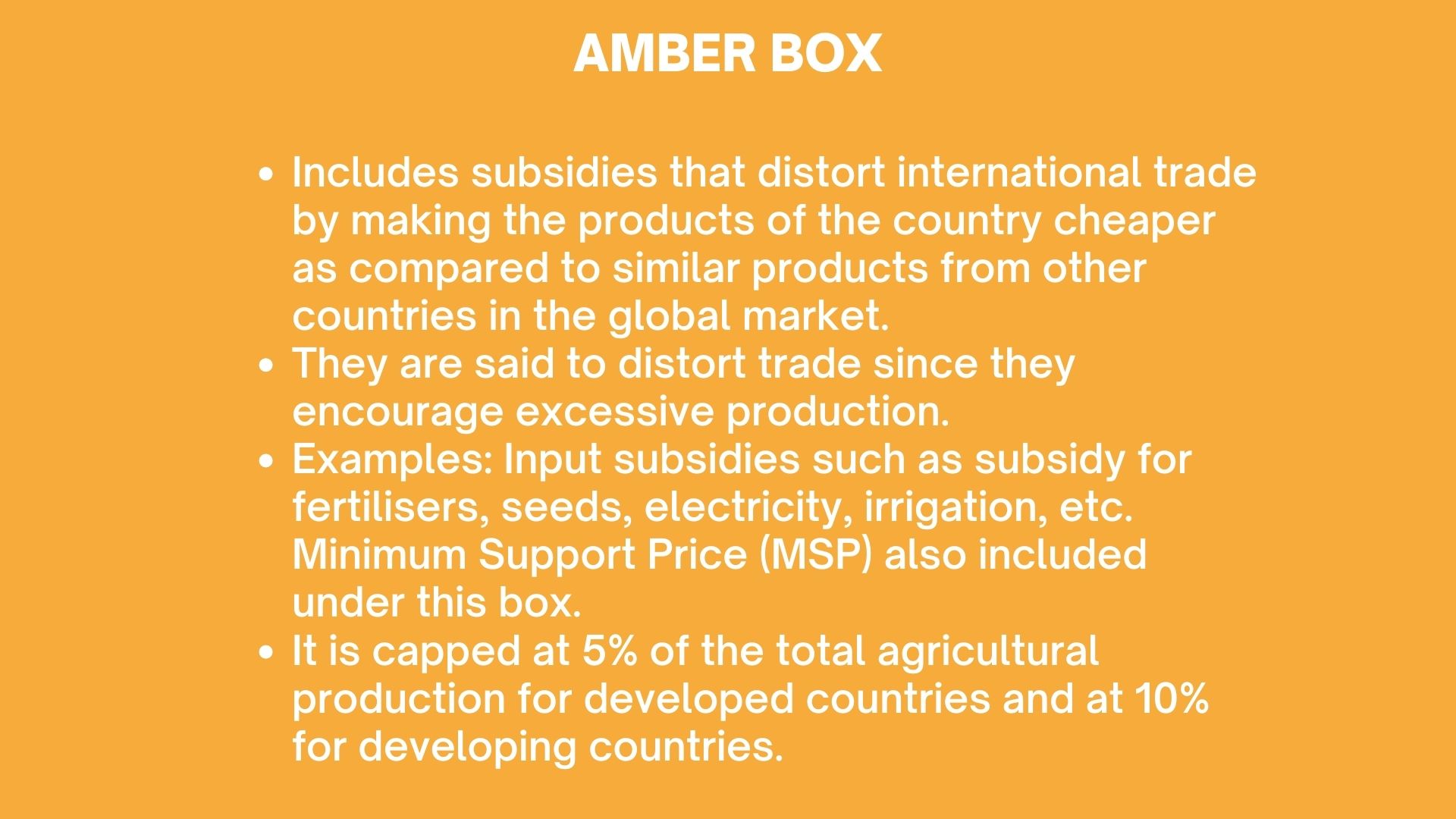The Agreement on Agriculture (AoA) is a World Trade Organisation treaty that focuses on reducing the agricultural support and subsidies given to domestic producers by countries. It is one of the most contentious agreements within the WTO. In this article, you can read all about the WTO Agreement on Agriculture, its impact on India and also how developed countries have been taking advantage of the WTO regime in their favour. This is an important topic for the UPSC exam economy and agriculture segments.

Agreement on Agriculture
The Agreement on Agriculture (AoA) is a WTO treaty that was negotiated during the Uruguay Round of the General Agreement on Tariffs and Trade (GATT) and formally ratified in 1994 at Marrakesh, Morocco. The AoA came into effect in 1995.
- According to its provisions, developing countries were to complete their reduction commitments by 2000 and developing countries by 2004.
- The Least Developed Countries were not required to make any reductions.
- The Agreement covers products that are normally considered part of agriculture but excludes forestry and fishery products and also rubber, sisal, jute, coir and abaca.
- The focus of the AoA is the elimination of what are called “trade distorting” agricultural subsidies.
- According to the WTO, the overall aim of the Agreement is “to establish a fairer trading system that will increase market access and improve the livelihoods of farmers around the world.”
Features of WTO Agreement on Agriculture
The provisions of the WTO Agreement on Agriculture relate mainly to three broad categories of agriculture and trade policy, which are discussed below.
- Market Access
- This includes:
- Tariffication – implies all non-tariff barriers to be abolished and converted to tariffs. Non-tariff barriers include variable levies, minimum import prices, quotas, state trading measures, discretionary licensing, etc.
- Tariff reduction – Developing countries were obligated to reduce tariffs by 24% in 10 years.
- Access opportunities – Minimum access equal to 3% of domestic consumption in 1986-88 will have to be established for the year 1995 rising to 5% at the end of the implementation period.
- This head includes improving access to markets by removing trade barriers.
- This includes:
- Domestic Support
- This concerns the policy support and subsidies given by countries to enhance domestic production. WTO has classified agricultural subsidies and policies into different boxes, which are explained in a section below in detail.
- Export Subsidies
- Here, there are provisions related to member countries’ commitments to reduce export subsidies.
- Developed countries are mandated to reduce their export subsidy volume by 21% and expenditure by 36% in 6 years, in equal installment (from 1986 –1990 levels).
- Developing countries need to reduce export subsidy volume by 14% and expenditure by 24% over ten years in equal installments.
Read about various WTO Agreements in the link.
WTO Agricultural Subsidies Boxes
The domestic support subsidies are categorized into various boxes in the WTO. The various boxes and their implications are discussed in this section.
The images below describe the subsidies classified according to the WTO Boxes.



Special and Differential Treatment (SDT)
Other than the three boxes, there is also another box of subsidies that confer special and differential treatment for developing countries and LDCs. This is also called the Development Box.
- Under this, countries are permitted untargeted subsidized food distribution to satisfy the requirements of the urban and rural poor.
- They may also give investment subsidies that are usually available to agriculture and agricultural input subsidies available to low income and resource-poor farmers.
- These include purchases for and sales from food security stocks at administered prices provided that the subsidy to producers is included in calculation of the Aggregate Measure of Support (AMS).
- Under SDT, developed countries may be given an exemption from implementing their reduction commitments at the AoA for ten years.
- As of now, LDCs are not required to make any kind of reduction commitment at the AoA.
- Developed countries are not provided with the SDT.
Agreement on Agriculture Criticism
Opponents of the Agreement say that it reduces tariff protection for small farmers, which is a major income source in developing countries, while at the same time, it allows rich countries to continue subsidising their farmers.
- Through clever classification of the subsidies into trade-distorting (amber box) and non-trade distorting (green box), developed countries manage to heavily subsidize agriculture in their countries while targeting developing countries including India of indulging in trade-distorting practices.
- A collaborative India-China study has shown that developed countries such as the United States, Canada and countries of the EU give out several times higher subsidies to their farmers than the rest of the world.
- Developed countries continue to provide trade-distorting subsidies without attracting any penalties under the WTO.
- Under the Amber Box, developed countries were given the choice of either accepting a product-specific ceiling of 5 per cent, or an overall cap. By choosing the latter option, most developed countries have been able to better target sops for specific crops.
- Even with low subsidies, India should be worried of breaching the 10% limit on subsidies.
- The developed countries constantly take developing countries to task on policies like the Minimum Support Price (MSP) while they continue to support their farmers and also make barriers for trade and market entry.
- The WTO’s push towards globalisation threatens three dimensions of a sustainable and equitable agricultural policy, namely, ecological security, livelihood security and food security. Globalisation will adversely affect producers with low or no capital and investment.
WTO Agreement on Agriculture (AoA):- Download PDF Here
| Related Links | |||
| UPSC Mains Exam | Government Exams | ||
| NCERT Notes | General Agreement on Tariffs and Trade (GATT) | ||
| Trade Related Aspects of Intellectual Property Rights (TRIPS) | WTO Negotiations and Doha Round | ||
Comments